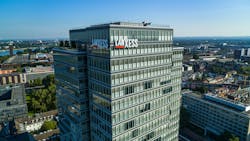Lanxess Fined $2.7M for Air Quality Violations at Washington Chemical Plant
The Southwest Clean Air Agency (SWCAA), Vancouver, Washington, has issued a $2.7 million civil penalty to Lanxess Corp. for repeated air quality violations at its chemical facility in Kalama, Washington. The penalty follows a multi-year investigation that found the plant exceeded emission limits for hazardous air pollutants in 2022 and 2023.
SWCAA is responsible for enforcing federal, state and local outdoor air quality standards and regulations in the counties of southwest Washington state.
The agency determined the Kalama site released more than 24 tons annually of hazardous air pollutants — well above its permit cap — as well as excess emissions of toluene, isooctane and methanol. Reported emissions were also found to be significantly lower than actual levels, according to the agency.
The violations place the Kalama facility in the category of a “major source” of hazardous air pollutants under federal rules, requiring the plant to now comply with stricter pollution control standards, including provisions of the Hazardous Organic NESHAP and Boiler MACT.
According to the Washington State Department of Ecology, the Kalama plant, currently operated by Lanxess, has produced organic chemicals along the Columbia River since 1962. The facility converts toluene into chemical ingredients used in food, beverages, pharmaceuticals, fragrances, surfactants and plasticizers. The 40-acre manufacturing site sits within a larger 165-acre property, most of which is wetland.
The plant has a long history of environmental concerns, according to the Department of Ecology. Past investigations documented releases of benzene, toluene, biphenyl, bis(2-ethylhexyl) phthalate and diphenyl oxide to soil and groundwater. Contamination reportedly has migrated toward the Columbia River and adjacent wetlands.
Since the 1990s, the facility has operated under federal and state cleanup agreements requiring corrective measures such as interceptor trenches, vapor extraction and oxygen diffusion systems to contain pollutants, noted the department. An environmental covenant restricts site activities to protect ongoing remediation.
“SWCAA’s enforcement action is intended to prevent the company from gaining an economic advantage through noncompliance with air quality regulations and to deter future violations,” the agency said in a statement.
Lanxess has also been ordered to bring the plant into compliance with all federal major-source regulations. Emissions after 2024 will be addressed in separate enforcement actions, which could result in additional penalties, according to the SWCAA.
About the Author
Amanda Joshi
Managing Editor
Amanda Joshi has more than 18 years of experience in business-to-business publishing for both print and digital content. Before joining Chemical Processing, she worked with Manufacturing.net and Electrical Contracting Products. She’s a versatile, award-winning editor with experience in writing and editing technical content, executing marketing strategy, developing new products, attending industry events and developing customer relationships.
Amanda graduated from Northern Illinois University in 2001 with a B.A. in English and has been an English teacher. She lives in the Chicago suburbs with her husband and daughter, and their mini Aussiedoodle, Riley. In her rare spare time, she enjoys reading, tackling DIY projects, and horseback riding.

